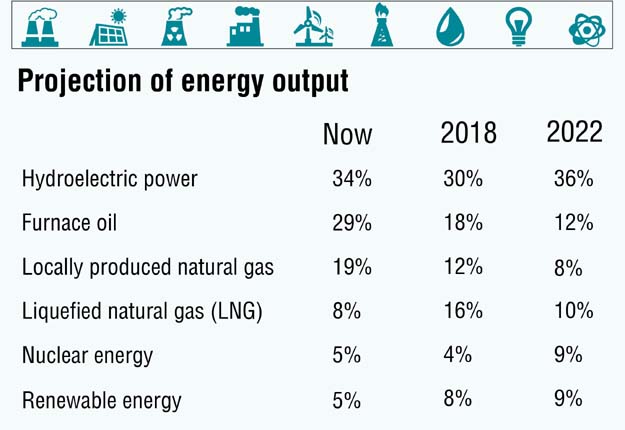
At present, because of the poor energy mix, the entire chain has been affected, which is pushing energy companies towards financial collapse.
Sources said Finance Minister Ishaq Dar had visited the US where he held a meeting with the World Bank on the possibility of funding solar power plants in Pakistan. The bank expressed its willingness, saying it was ready to finance the development of solar projects with a tariff of 3 to 3.5 cents per unit, which was quite attractive.
Tesla releases pricing patterns for its ambitious Solar Roof project
Sources said the government was now working on the possibility of availing itself of the financing from the World Bank’s Green Fund that would go to renewable energy projects to be set up in far-off areas of Pakistan.
In order to secure the proposed funding, the Ministry of Water and Power will engage an international panel of experts, who would develop a road map for the induction of renewable energy and identify the sites keeping in view the grid stability as well as overall modernisation of the national grid.

According to an official, the Ministry of Finance wants the power ministry to tap financing from the Green Fund immediately. However, the government would have to select land for the proposed projects.
Officials were of the view that off-grid areas of Balochistan would be suitable places for the proposed solar plants of 50-100 megawatts capacity each.
Apart from this, the water and power ministry was also discussing another proposal to select sites for small solar power plants of 1-2MW that would be more feasible in the areas of Balochistan and other provinces where the population was scattered.
However, the renewable energy would be useful when the base load capacity has been sufficiently developed to cater for projected demand.
The Ministry of Water and Power was of the view that a reasonable amount of electricity could be generated through the solar system in buildings of big cities as had been done in the parliament building in Islamabad.
The ministry was informed that grid stability would have to be ensured by increasing the base load capacity of projects. Such plants would be more useful for off-grid use. There was a need to mobilise experts from across the world to identify the ways and solutions for absorbing this energy source in the system. For this purpose, a panel of international experts would be engaged.
Among varying sources of electricity, hydroelectric power has a share of 34% in the existing power generation capacity, furnace oil 29%, locally produced natural gas 19%, liquefied natural gas (LNG) 8%, renewable and nuclear energy 5% each.
Is Pakistan's solar power poised to take off amid energy crisis?
In 2018, when power production is expected to go up to 33,124MW, the share of hydroelectric power will be 30%, furnace oil 18%, LNG 16%, local natural gas 12%, imported coal 10%, renewable energy 8%, nuclear power 4% and local coal 2%.
However, in 2022, hydroelectric power will have a share of 36%, followed by 12% for furnace oil, 10% for LNG, 9% for nuclear energy, 9% for renewable energy, 8% for local natural gas, 8% for local coal and 8% for imported coal.
Published in The Express Tribune, May 12th, 2017.
Like Business on Facebook, follow @TribuneBiz on Twitter to stay informed and join in the conversation.
















COMMENTS
Comments are moderated and generally will be posted if they are on-topic and not abusive.
For more information, please see our Comments FAQ